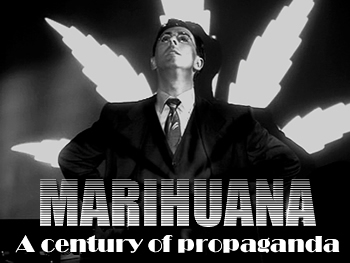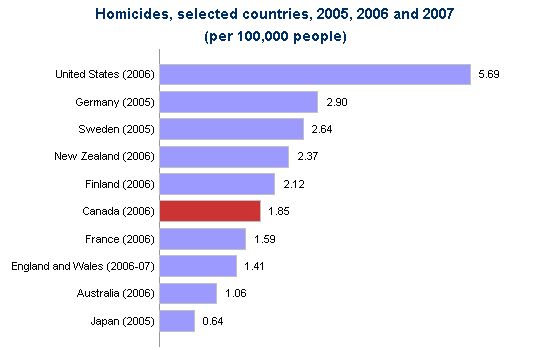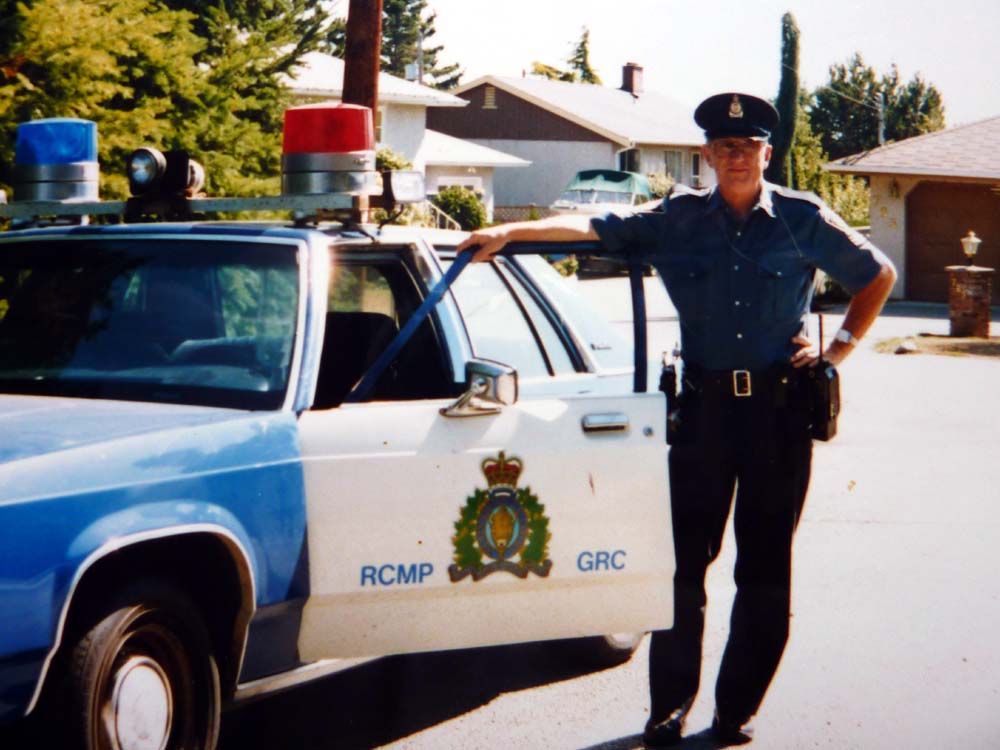A Life Long Learner
The purpose of learning is growth, and our minds, unlike our bodies, can continue growing
as we continue to live.
Mortimer J. Adler
That’s what learning is, after all; not whether we lose the game, but how we lose and how we’ve changed because of it and what we take away from it that we never had before, to apply to other games. Losing, in a curious way, is winning.
Richard Bach, The Bridge Across Forever, 1984
A Lifelong Learner

October 28, 2011 This past Friday family and friends gathered at Camosun College to join in the celebration with fifteen hundred students who completed program studies ranging from full degrees to certification in various trades and career specialities. Among those being recognized was our very own Lynn Frances McNeill, a woman who is the very definition of a ‘lifelong learner’.
(464)
Amalgamation in Greater Victoria
Collage (L to R): (T) Langford, Sidney, Victoria, Saanich, Highlands,
(C) Esquimalt, (Malahat), (CRD) Oak Bay, Metchosin,
(B) Colwood, Sooke, North Saanich, Central Saanich, View Royal
(Link to Photo Album)
Link to a 2015 Research Summary on Police Force Size vs Cost/Efficiency
A Literature Review of the Amalgamation of Police Services in Canada
(This is a great summary for those wishing to learn more about whether the police in
Greater Victoria should be amalgamated)
Link to Next Post: Amalgamation in Greater Victoria: Questions and Answers
Link to Most Recent Post Directed at Young People: Local Communities: Keeping the Spirit Alive
The Real Costs of Amalgamation (Time Colonist November 23, 2014)
Note: By pure chance after writing Amalgamation: Question and Answer (link above) during a further search on the subject, an astounding discovery was made: The Bish Papers. These papers, written by a renowned Economist and researcher into Public Administration, stripped away the veil of opinion and conjecture that defined the debate on Amalgamation to this point in time. You may still wish to read this post and as well as the Questions and Answers, however the solid, reliable information comes from the papers written by Dr. Robert L. Bish. Link here to:
Amalgamation: A Search for the Truth
1. October 17, 2014: Introduction to Updated Post
The Capital Regional District: With thirteen members spread over 2,340 km² the CRD is roughly three times the size of Calgary, and somewhat larger than the 1,800 km² GTA (the Amalgamated Six in Toronto). However, our population clearly considerably less.
The CRD (including the Malahat), situated in a secluded corner of the Pacific Northwest, has within its small spread of 593,o59 acres filled with mountains, inlets, bays, forests, farmland, as well as an ocean border and dozens of streams, rivers. and lakes. Almost every home in the region is situated no more than fifteen from long stretches of sun-kissed sand. Looking towards the eastern and southern horizons, you see snow capped  mountains and a sprinkling of smaller islands around which killer whales, sea lions, seals and salmon entertain tens of thousands of visitors each year.
mountains and a sprinkling of smaller islands around which killer whales, sea lions, seals and salmon entertain tens of thousands of visitors each year.
Trail Map: The CRD has a network parks connected by a seemingly endless series of hiking and biking trails that reach to every community from Oak Bay in the south to North Saanich, then west to Metchosin and Sooke. Because of the mild climate these parks and trails are heavily used year-long (double click to open the map).
The mild weather also draws large numbers of Canada’s top athletes to half dozen indoor and outdoor high-performance centers sprinkled across the region.
As part of the infrastructure, the CRD comes equipped with world-class hospitals, schools, colleges, universities, libraries, recreation and sports facilities, entertainment and shopping, virtually everything a growing family might desire, yet there is still plenty of room for singles and seniors who desire to become fully engaged in a healthy lifestyle. In a few words, the Capital Region is a pristine jewel in the Pacific Northwest that draws tourists and new residents from across Canada and around the world. Calgary also does that, but Oil Money is the game that draws the most people to Calgary.
All things being equal, it would be difficult to find anyone in the CRD who would rather live, raise a family or retire elsewhere in Canada. Yet, despite this abundance, one member of the CRD family is constantly agitating to change the governing and administrative structure. To accomplish this they would amalgamate some or all of the parts into one unit with the goal of achieving ‘economies of scale’ and ‘efficiency’. To provide some balance to their negative campaign, this article is being updated.
(7216)
Leif Eriksson Day: The New Canadians
A Nordic History Lesson

Two fine Nordic specimes, one with traces to another culture, stand with young women
they captured in earlier raiding parties in Eastern Canada. Even a casual comparison
to the painting of Erik the Red (below), demonstrates an
amazing resemblance to these modern day men.
A Day of Celebration
As October 9th again rolled around we took the city by storm in our Norwegian horned helmets and ninth century Nordic sweaters. With a plentiful supply of mild tasting Aquavit (45% alcohol by volume), delicate lutefisk appetizers and singing the ever popular Norwegian folk song “There Ain’t No Norwegians in Dickeyville”, we spent the evening celebrating the life and times of Leif Erikson, son of the famous Nordic Explorer, Erik the Red.
While last year we had braved heavy winds and rough weather in our trek around the downtown pubs, this year the wool sweaters and helmets took their toll and we had to carry a few who succumbed to heat exhaustion, well, at least that’s what we assumed, as no one ever heard of anyone getting sick from to much aquavit while eating lutefisk appetizers!
(2476)
Interlauken: Soaring with Eagles

The Eagles Hatch a Plan
On impulse, something that is very much a part of our lives these days, Lynn and I booked a flight with a paragliding group. Over the past few days in Interlaken, Switzerland, we watched as dozens of paragliders soar like Eagles through the mountains, then touch down in the middle of the city.
It was something we did not want to miss as neither of us had ever hung in a parachute. Perhaps this statement speaks more for Harold than Lynn, as Lynn was quite happy to keep her feet on good old terra firma. Well, being the adventuresome life partner she is, the answer was ‘sure’, although to be truthful, it was given in less than convincing manner. We booked a flight for noon the next day, but as luck (very good luck from Lynn’s point of view) would have it, the next morning found the mountains shrouded in heavy cloud.
Lynn noted the dismal conditions but the transparently of her message conveyed a different though: “Well, we could just laze around and catch up on our reading. That would be fun, wouldn’t it?” Sorry Lynn, not to be, as by noon the clouds were clearing and our adventure was re-booked for 3:00 pm.
(470)
RCMP Face Lockout in British Columbia
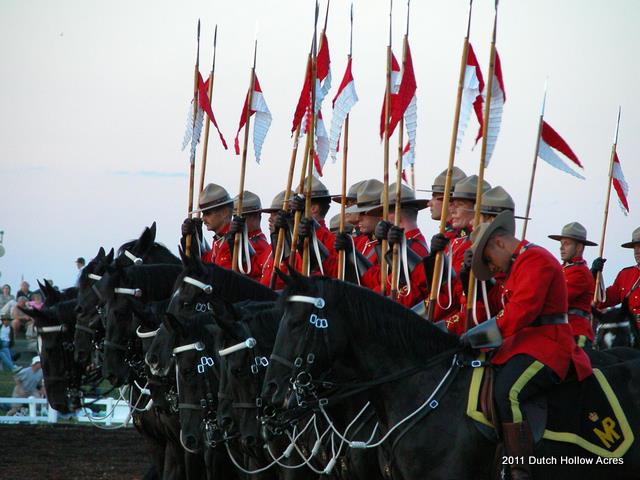
RCMP Members Face Lockout in BC (file photo)
The following ‘alternate’ news report was written after the recent dust-up between BC and Ottawa over RCMP contract services in BC. In the following ‘News Release”, our political leaders have been given Management and Labour Association roles befitting the dispute:
1 Vic Toews, Federal Minister for Public Safety (Conservative), spokesperson for the powerful Federal Employers Group2 administering RCMP contracts across Canada.
Shirely Bond, Solicitor General for BC (Liberal), the spokesperson for the BC Employees Group providing service across BC.
3 Jaspir Sandhu, an Ottawa based, Public Service Safety Critic (NDP), a left-leaning group supporting Employees.
For Immediate Release
Victoria, British Columbia
September 28, 2011
RCMP Threaten Strike
In a surprise move yesterday, the RCMP in Ottawa, operating under the direction of the Federal Employers Association (a Conservative Group) threatened to withdraw all contract policing services in British Columbia. The threat comes at a particularly bad time as any widespread disruption of police services could have an adverse effect upon the fragile economic recovery.
A spokesperson for the RCMP Employers Association, Vic Toews,1 stated the employers have already negotiated contracts with employees in Alberta and Saskatchewan and that employees in British Columbia will simply have to follow suit or the services of the RCMP will be withdrawn in British Columbia.
Toews stated: “They (AB and SK) find the (contract conditions) to be reasonable and now the other provinces will have to make the decision, whether they want to go with the RCMP as their provincial police or whether they want to do something else and that’s their choice.”
A spokesperson of the British Columbia Employees Association, Shirley Bond2, was taken aback by the statements, stating her group will not bow to the pressure tactics any federal employer group. Bond stated negotiations have been ongoing for the past two years but the employers have been increasingly intransigent, particularly since signing contracts in Alberta and Saskatchewan. It appears to be another case of divide and conquer on the part of the RCMP Employers Association.
According to Bond, a key issue in British Columbia is gaining back control from the employers. Over the past contract period, the employers have simply been running the shop and the employees are no longer willing to sit back and accept that as the status quo.
Jasbir Sandhu3 a public service safety critic (in opposition), stated: “Is pulling police off the streets of British Columbia part of (the employers) tough-on-crime agenda?” Other spokespersons with the employees stated that if the RCMP Employers Association in Ottawa follows through with their threat to pull police off the streets of British Columbian, the Employees will seriously consider moving back to a ‘made at BC, Police Service?
Many other employee groups across the country are now backing Bond, stating the federal employers have gained far to much control and, in addition, the ongoing political infighting and scandals that have wracked RCMP have emanated from the highest levels in Ottawa, and that is detracting from the high standards British Columbia desires to promote within the police service.
Meanwhile, in Ottawa, it would not be surprising to see the majority Conservatives who run the Employers Association, might lock-out the RCMP in BC if they don’t sign off on a new contract within the next week or two.
Harold McNeill
harold@mcneillifestories.com
Adieu
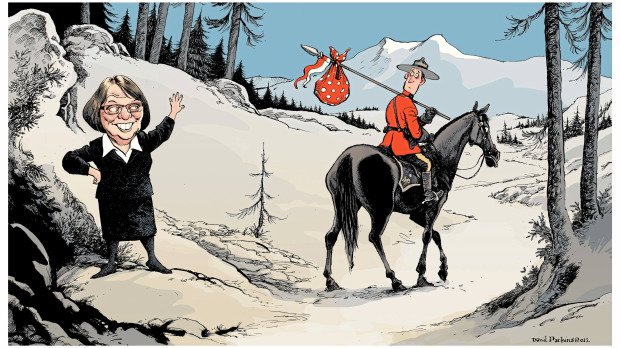
Shirley Bond and the BC Union of Municipalities served notice on the Ottawa based RCMP Employees Group that unless they return to the table for some ‘good faith’ bargaining, they will be sent packing. The RCMP could be out and a Provincial Force on its way in as early as the New Year.
Globe and Mail.
(342)
Crime and Punishment: Ideology Trumps Reason
Most Recent: Texas Conservatives Reject Harpers Plan
News Flash: October 28, Times Colonist (A2), Pot Laws Fuel Gang Wars. An Angus Reid poll shows very little public support for maintaining tough laws against marihuana.
Introduction
Too often Governments are driven by ideology rather than reason and common sense of which the recent introduction of the Omnibus Crime Bill (C-10) is another example. In an earlier decade, the Liberals walked a similar path with their Long Gun Registry5.
While “let’s get tough with crime” resonates well within the general population, governments 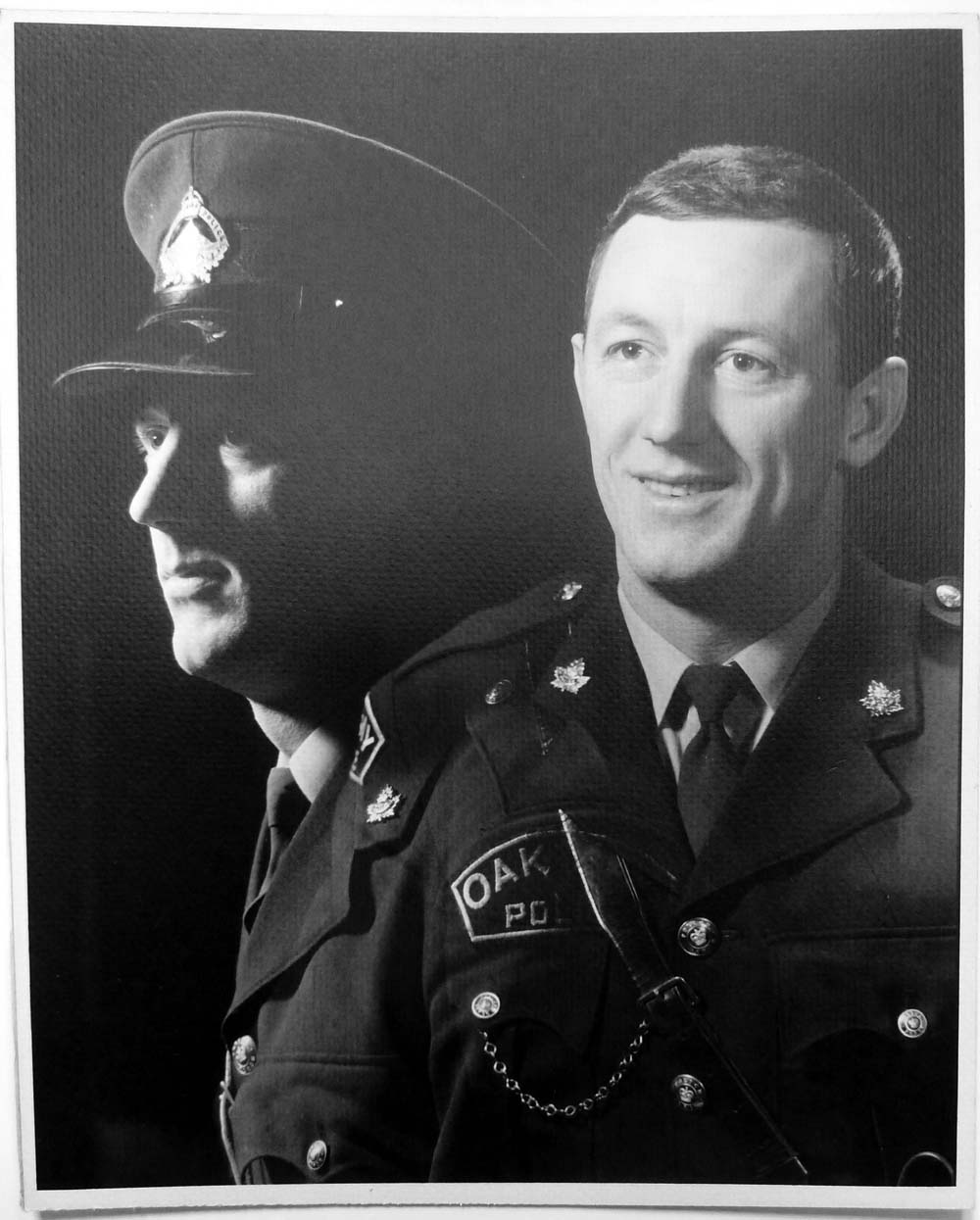 must seek to avoid painting all criminal transgressions with the same brush. Paedophiles, child pornographers, rapists, murders and other violent criminals clearly fall into a different category than do those who commit property crimes or are involved in the use or distribution of soft drugs.
must seek to avoid painting all criminal transgressions with the same brush. Paedophiles, child pornographers, rapists, murders and other violent criminals clearly fall into a different category than do those who commit property crimes or are involved in the use or distribution of soft drugs.
Photo (1966): The author spent thirty years working the front lines as a police officer as well as studying criminal justice and law reform issues both at University (BSc, 1974) and as a private interest. After retiring in 1994 with the rank of Detective-Sergeant, the author continues to study and write on crime and punishment issues.
For Canadians, we have only to look south of the border to see the impact of broad-spectrum “tough on crime” initiatives such as “three strikes and your out” and “mandatory minimums”, to see the results (Ref: Graph 4; Pie Chart 5). We are even being warned by many legislators and legal scholars in the United States against following in the footsteps of the USA. It is certainly not a path we want to follow, yet a portion of Bill C-10 charts just that course.
I encourage each of you to take a few minutes to read or scan this article and consider the arguments made for taking a more reasonable approach.
Harold McNeill
Victoria, BC
October 2011
1. Law and Order
All Canadian political parties, even those with the slimmest chance of becoming the governing party at the national or provincial level, play the ‘law and order’ card as a means to gain votes. A ‘Safe Streets and Communities’ or a ‘Tough on Crime’ strategy always plays well in a world explained in thirty-second news clips of random, isolated, violent, but infrequent criminal acts, many of which occur in other countries. It is made to appear these criminals are ruling the streets within every community.
Statistical trends, (local and worldwide), expert opinions, experience with crime suppression legislation in other jurisdictions and basic ‘reason’ have little impact when it comes to changing well-established beliefs about crime. For politically expedient reasons, governments likewise choose to ignore the evidence.
For example, crime in Canada, with few exceptions, has been in steep decline (also Charts 1, 2, and 3) for twenty years largely due to the changing demographics of our society – older people simply do not commit as many crimes. The governing Conservatives seem not to recognize this fact, nor do they seem to understand that our entire justice system from prosecution offices, to the courts and jails, is currently bursting at the seams. Without making any of the changes listed in Bill C-10, the current system requires a tremendous injection of funds just to maintain the stability.
That pressure, along with ongoing cutbacks in Provincial and Federal spending in an attempt to reduce deficits, has resulted in hundreds of accused, many charged with serious offences, have had their charges dropped for want of prosecutors, judges and courtrooms. In protest, dozens of prosecutors across the country (many in Quebec) have walked away from the system. Even at current levels of conviction and sentencing, finding room for new placements in Provincial and Federal institutions has reached a crisis point.
2. Why Violent Crime Initiatives May Fail
While Bill C-10, the Omni-Bus Bill currently before Parliament, suggests it represents a ‘get tough’ on ‘hard’ crime, the package could well have just the opposite effect because the vast majority of those affected by C-10 will be those committing non-violent and victimless (‘soft’) crimes.
It is well established the Criminal Justice system, from the courts to the prison system, are presently under considerable stress. As the system becomes further clogged with non-violent cases (e.g. property crimes, marihuana distribution and possession, ‘grow ops’, etc), the prosecution of more serious crimes (e.g. rape, murder, robbery, child molestation, paedophiles, organized crime, gangs, etc.) may be delayed. Considerable publicity has been given to dozens of cases involving extremely violent criminals are now walking the streets after having their cases thrown out due to extreme delay.
The sections of C-10 that will pose the greatest challenge are those related to ‘mandatory minimums’3 and, to a lesser extent, removal of conditional sentences (house arrest). Minister of Justice Rob Nicholsen, stuck in a position of having to justify the initiatives, often fumbles when asking about the legislation.2 Little wonder – in another decade, Mr. Nicholsen was vice chair of a parliamentary committee that came out strongly against ‘mandatory minimums’ the rationale being that it would unduly hamstring Judges dealing with complex variables in many criminal cases.
Who are the persons most affected in this new world order of crime and punishment? It will be  those convicted of non-violent, ‘victimless’ crimes such as cultivating pot (as few as six plants) and those involved in the distribution system. In some instances, the mandatory minimum penalties for pot offenders will exceed those applicable to child sex offenders. If this sounds unreasonable, take time to research the mandatory minimums legislation.
those convicted of non-violent, ‘victimless’ crimes such as cultivating pot (as few as six plants) and those involved in the distribution system. In some instances, the mandatory minimum penalties for pot offenders will exceed those applicable to child sex offenders. If this sounds unreasonable, take time to research the mandatory minimums legislation.
Photo: These pot plants, on the deck of a rural Salt Spring Island rental residence in British Columbia, were part of a larger ‘grow op’. Under the proposed legislation, just the plants on the deck could result in a year of imprisonment for each of the residents who appeared to otherwise be law-abiding, productive citizens. The details of this case will be published later in the Police Notebook Series. Photo by the author taken during a 1980s investigation.
3. That Ubiquitous Weed
Since the 1960s, marihuana has continued to permeate all socio-economic levels of our culture but, as with many laws, it is those at the lower levels who most often get caught up in the law enforcement web. Today, pot is a multibillion-dollar enterprise4 in Canada with British Columbia at the epicentre. With ever-increasing demand, particularly in the United States, there are now so many ‘grow ops’ throughout the Southern Interior and BC Coastal Islands, the RCMP and other police agencies have largely given up on large-scale enforcement as being a waste of scarce police resources (ref: CBC radio interviews with RCMP officers in the Kootenays, late September 2011).
Even with less emphasis being dedicated to marihuana enforcement across Canada, more than 18,000 individuals, largely small-time growers and distributors, are still convicted each year. In the future, a majority of those persons will be subject to mandatory minimum sentences that will require thousands of new prison cells and staff for which few contingency plans have been made or money allocated. Granted the Federal and Provincial Governments have budgeted considerable money for new prison space and personnel, but that is being done to relieve current over-crowding partially caused by other, recent, ‘law and order’ revisions(e.g. removal of the ‘two for one’ provisions, etc.).
4. The United States Experience
In both the short and long term, mandatory minimum sentences will not change behaviours any more than did prohibition in the United States stop people from purchasing and consuming alcohol. What it will do is create an influx of individuals into an already stressed court and prison system. As most of those convicted will be held in Provincial facilities, the costs will become the entire responsibility of the Provinces, the costs of which is estimated to be in the order of ten billion. When this finally dawns on politicians, particularly those in British Columbia, there is bound to be a backlash as us now evident south of the border.
Today, in the United States, we are beginning to see many highly placed Republicans (who make our Conservative leaders look like raving socialists) admitting the ‘get tough on crime’ initiatives that began in the Regan era and perpetuated by ongoing administration, have been
a failure. (Ref Charts 4 and 5). Even with extremely harsh penalties, demand for pot has grown exponentially. Many US States are now rescinding or relaxing the laws in an effort to salvage their justice systems. Dozens of other States will soon follow suit. To see Canada embarking upon a path the US began walking over two decades ago makes no sense what-so-ever.
By way of comparison, if we were to lock up as many people in Canada as they do in the United States, our prison population would move from its current level of roughly 45,000 to an extraordinary 210,000-245,000. ‘Scare’ tactics’, yes, perhaps, but that is the reality of using ‘prison’ as a primary means of bringing compliance to all criminal laws without regard to type, just as they have done in the United States over the past 30 years.
5. The Hidden Victims of “Tough on Crime” Legislation
To carry the costs of the new ‘tough on crime’ legislation, money will need to be diverted from other parts of the system and, as is often the case, programs for the mentally ill, disadvantaged and disabled are frequently the first targets. It has long been established these persons make up a disproportionate share of prison populations and slashing programs 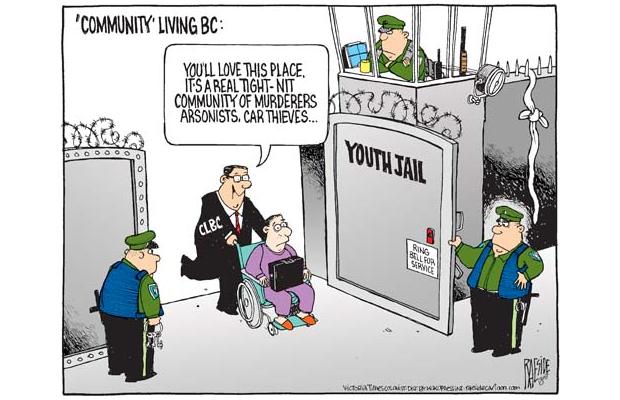 will invariably create new challenges that will put more pressure on the courts and prisons. It is a vicious cycle destined to spiral downward as has happened in the United States with their ongoing ‘war on drugs’, ‘war on crime’ ‘war on terror’ and ‘three strikes and your out’ strategies.
will invariably create new challenges that will put more pressure on the courts and prisons. It is a vicious cycle destined to spiral downward as has happened in the United States with their ongoing ‘war on drugs’, ‘war on crime’ ‘war on terror’ and ‘three strikes and your out’ strategies.
Cartoon: Adrian Raeside political cartoon in the Times Colonist on November 12, 2011.
The other groups seriously affected by overzealous imprisonment are the families of those incarcerated (usually men), who are left to fend for themselves. You might take a hard approach and say ‘tough luck’ that is the result of making bad decisions, but the reality is, many sent to prison would have otherwise been law-abiding individuals who held jobs and were supporting families (reference the grow op picture above taken on Salt Spring Island).
Even if the Conservatives come to admit the path is not sustainable, billions will have been wasted (as with the Long Guns Registry) and tens of thousands of lives affected as the Government attempts to reign in the crime and punishment tsunami they continue to unleash. When removed from power, as they certainly will during some future election, another party will be given the opportunity to reverse the direction but, unfortunately, will likely implement costly ideologies of their own.
Will there come a time when facts, reason and ‘common sense’ prevail over ideology? Probably not, as long as we allow ourselves to be seduced into believing our lives are endangered by murders, rapists, paedophiles and internet prowlers, drug traffickers, terrorists, organized gangs and others that, we have been confidently assured, are lurking just around the corner, waiting to pounce on the innocent and unsuspecting.
October 2011
Footnotes
1 Incarceration Rates: In the United States, in 2008, approximately one in every 31 adults (7.3 million) was behind bars, or being monitored (probation and parole). In 2008 the breakdown for adults under correctional control was as follows: one out of 18 men, one in 89 women, one in 11 African-Americans (9.2%), one in 27 Latinos (3.7%), and one in 45 whites (2.2%). Crime rates have declined by about 25 percent from 1988-2008.[13] 70% of prisoners in the United States are non-whites.[14] In recent decades the U.S. has experienced a surge in its prison population, quadrupling since 1980, partially as a result of mandatory sentencing that came about during the “war on drugs.” Violent crime and property crime have declined since the early 1990s.[15]
While the argument could be made that the dropping “crime rate” in the US was due to locking up more criminals, that argument would disregard the fact that crime has been dropping in every democratic country. The number sent to prison in all other countries is just a fraction of the number sent to prison in the USA, therefore, one might infer that other factors are at work.
2 “We do not use statistics as an excuse not to get tough on criminals.” That was federal Justice Minister Rob Nicholson’s astonishing response to Statistics Canada’s finding in July that crime rates in Canada now stand at the same level they did in 1973. Another point being periodically made by the Justice Minister is that crime is ‘under-reported’. While that is true, that under-reported crime is generally of the non-violent type (car prowling, break and enter, etc). In the period of 1960 – 1990, during my time in service, police statistical collection methods were not nearly as refined as they are today meaning the amount of unreported crime back then was much larger than now. This suggests the drop in crime over the past 20 years is even greater than that reported.
3 Estimates vary widely, but, on average, 20,000 metric tons of marihuana are consumed in the United States each year. Of that, 10,000 metric tons are imported with less than 10% of the total being intercepted by various police agencies. This is likely about the same as the seizure rate for alcohol during prohibition. About 60% of the marihuana produced in Canada is exported to the US with the lion’s share coming from British Columbia’s 15,000 to 20,000 grow ops. While many are small-time operations for personal use only, there hundreds of consolidated operations. Police seizures in Canada run at about the same rate as that in the US, perhaps a little less as our local, provincial and national police forces have greatly scaled back enforcement in recent years.
4 For a good roundtable discussion including US Justice Department Officials on the subject of ‘Mandatory Minimums’ proposed for Canada, go to CBC Radio, The House
5 In the mid-1990s, the Liberal Government, after a few tragic events including the senseless killings at École Polytechnique (1989) and Concordia (1992), began an all-out push for mandatory long gun registration. Applauded by many citizens and police organizations, it was little more than an ideological platform designed to project an image of strength for law and order.
Once the path was charted and the idea accepted by the public, particularly those in urban areas, it was tabled in the Commons in 1995, implemented in 2001 and became mandatory in 2003. From the beginning, costs spiralled from millions to billions and not a shred of evidence was ever produced to show it made for ‘safer streets and communities.’ One good thing that could be said about the legislation was that it focused on prevention as opposed to detention, a strategy Governments seldom pursue.
Always staunch law and order populists, the Conservatives were unalterably opposed to the legislation as were their rank and file members, mainly those in rural and western constituencies. In order to appease the grassroots, the Conservatives vowed to remove the registry as soon as they gained power. Now having a majority, the registry will soon become a historical footnote. After billions were spent on the registry, the streets and communities across Canada will be just as safe as they were before the legislation became law.
I. Canadian Crime Rates
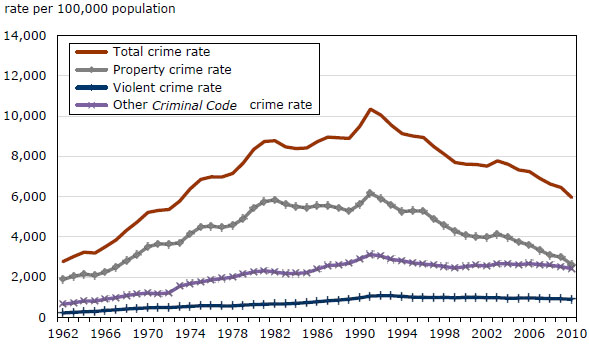
Overall, crime in Canada has been dropping since the early 1990s, a fact known by every police agency and reported by every media outlet. A challenge that remains – some types of violent crime continue to rise (murder is not one) so combined statistics can be a bit misleading. Because non-violent crime (property, marihuana and other victimless offences) is dropping at a significant rate, one wonders why Bill C-10 focuses far more heavily on those soft crimes than on violent crime.
2. Homicide Rates in Canada
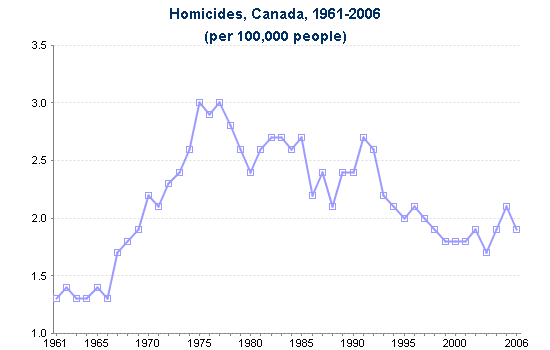
The homicide rate (number murders per 100,000) in Canada has been falling for decades and are now at the lowest rates since the late 1960s. This does not mean other aspects of violent crime are not rising. The challenge, Gangland killings (as with the recent killing of a gang leader outside a Kelowna casino) always gains major news coverage across the country. It is this coverage, and the heated rhetoric that follows, which makes it seem that murder is out of control. While every killing, gangland or otherwise, is cause for concern, we should not be lead to believe that these crimes are increasing in Canada. Take a look at the following graphic. While this is a narrow snapshot, it generally reflects the situation in the listed countries.
3. Homicides World Wide
While even one murder is one too many, Canada’s legislative and policing strategies over the past few decades, as well as an ageing population, is apparently paying dividends. In the United States, on the other hand, after implementing the most draconian measures to combat crime and drug use, have remained singularly ineffective. If we and our government think that by locking up more non-violent offenders, violent crime will be reduced, they (and we) will be wrong. In fact, it is just as likely to have the opposite effect.
4. Effects of Mandatory Minimum Sentences1 in the USA
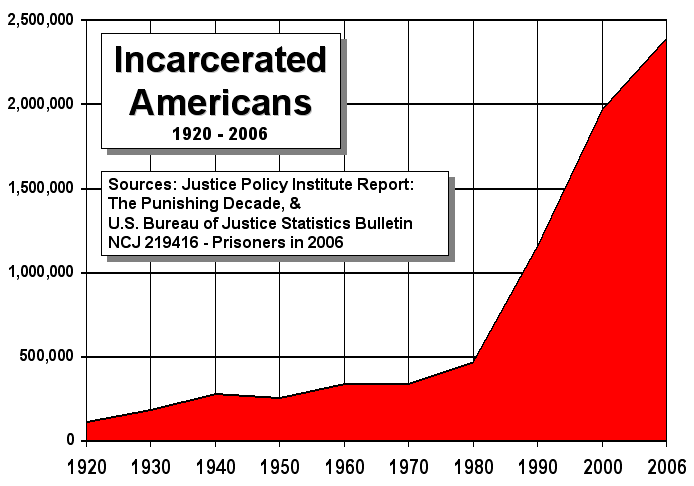
After viewing the two US Justice Department Graphs (above and below), it escapes me how senior bureaucrats and politicians in Ottawa, could not help but wonder if widespread use of “mandatory minimums”is the route we should follow in Canada. Whereas the percentage of inmates in Canada serving time for drug-related offences stands around 22%, the number in the US is 52% and rising. Imagine the effects on our society if we were to Americanize our justice and prison system!
5. Percentage Incarcerations Rates by Crime Type
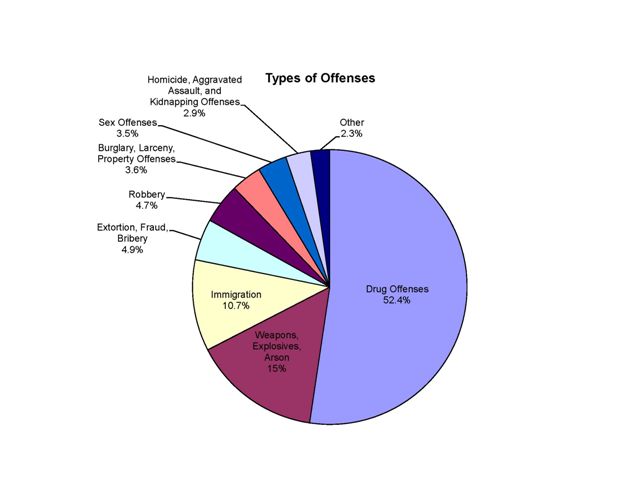
In 2006 the United States had the highest incarceration rate in the world at 573 per 100,000 (in 2010 it stood at over 700 and was still climbing) with lock them up and throw away key Russia, running a close second. The U.K (#99), Australia (#104), Canada (#123) and other Commonwealth Countries are in the range of 120 – 160 per 100,000. Your comments on the analysis outlined in this blog post
would be most appreciated.
September 28, 2011. National Post Article:
It is exceedingly difficult to find articles and commentary in support of the omnibus criminal-justice bill, however, one appeared in the National Post, September 28, 2011 (page A13). Written by Benjamin Perrin, a law professor at UBC and senior fellow at the MacDonald-Laurier Institute, he does about the only thing one could do to justify the full bill – he plays to the parts that have high public support.
In the article he highlights sections related to violent or morally repugnant crimes, items such as making and distributing child pornography, sexual assault of a child (various sub-sections), predatory paedophiles, date rape drug offences, etc. and uses those sections to indicate the entire bill has widespread support.
Mr. Perrin well knows that few, if any, would be opposed to the changes he highlights and most would support heavy penalties against those convicted of such offences, yet those offences are relatively infrequent occurrences within Canada and it is not those sections against which there has been an outpouring of public concern. Mr. Perrin has carefully avoided making any mention of the sections which will have the greatest overall impact and which will tend to swell our prison populations.
It is disingenuous of Professor Perrin, a supposedly intelligent man holding a full professorship at a respected University, to use his title and position to mislead the general public about the overall impact of the bill.
I would hazard to guess the Conservatives will, as they enter the debate, attempt to paint any who oppose the bill as ‘soft on crime’ and willing to let child abusers, porn distributors and others who commit horrendous crimes, walk free.
hdmc
7. Liberals and the Big Guns – A History Lesson
In the mid-1990s, the Liberal Government, after a few tragic events including the senseless killings at École Polytechnique (1989) and Concordia (1992), began an all-out push for mandatory long gun registration. Applauded by many citizens and police organizations, it was little more than an ideological platform designed to project an image of strength for law and order.
Once the path was charted and the idea accepted by the public, particularly those in urban areas, it was tabled in the Commons in 1995, implemented in 2001 and became mandatory in 2003. From the beginning, costs spiralled from millions to billions and not a shred of evidence was ever produced to show it made for ‘safer streets and communities.’ One good thing that could be said about the legislation was that it focused on prevention as opposed to detention, a strategy Governments seldom pursue.
Always staunch law and order populists, the Conservatives were unalterably opposed to the legislation as were their rank and file members, mainly those in rural and western constituencies. In order to appease the grassroots, the Conservatives vowed to remove the registry as soon as they gained power. Now having a majority, the registry will soon become a historical footnote. After billions were spent on the registry, the streets and communities across Canada will be just as safe as they were before the legislation became law.
hdmc
February 25, 2016 (1190)
(1796)
Moneyball: Movie Review
Brad Pitt, Jonah Hill
Director: Bennett Miller
Running Time: 134 minutes
After a summer of camping, it was great to get back to the fall/winter routines. Two days ago, the last piece of garden furniture was tucked away and the gutters cleaned, just as much needed rain began to fall. Today, a very warm, muggy day that is unusual in Victoria.
Earlier in the day we ran into a friend, Tanya Beatty, an avid baseball fan, who spent time California this summer and attended an Oakland A’s game. Although she had not yet seen the movie Moneyball, she heard it was very good so Lynn and I scooted to Silver City and were fortunate to catch a seat.
The movie was an excellent recommendation. Brad Pitt, plays Oakland A’s manager Billy Beane who, wanting to do something different, took a chance and hired a statistician Jonah Hill (Peter Brand) as one of his scouts.
Together they worked toward building a winning team with very little money. Hill had developed a system of tracking players that ran counter to traditional baseball wisdom and as a result he and Billy had to overcome a great many challenges as others worked to thwart them at every turn.
The story line is at the same time exciting, humorous and sad, as players, general managers, coaches, scouts and others struggle to survive in the unforgiving system that is Major League baseball. Each of the many characters in the movie play their parts well and five minutes in you will be glued to the story line and rooting for the protagonists.
Whether or not you like baseball, Lynn and I are certain you will enjoy this movie and give it four thumbs up. Thanks Tanya for the suggestion.
Harold and Lynn
(532)
Harold David McNeill
Above (1994): The spit-polished, uninformed, Sergeant Harold David McNeill, completed the final months of his police career assigned to a Quick Response Squad working the Commonwealth Games. It seems hard to believe they actually gave me the keys to an RCMP Cruiser. That final few months in uniform and having the run of the city with a joint-forces squad was a great way to say goodbye to the force. (Mar 25, 2018, 1565)
July 24, 2018. I moved this post to the front page for the young man (well, it’s relative) I just met first at Tim Hortons and then on Viaduct Ave. West. He lived in Oak Bay during the time of my police career and seemed to have some misconceptions about the work done by Oak Bay Police Officers.
While some of the stories I mentioned to him (the Telesford Murder (about a serial rapist) and Murder on Dennison Road, have yet to be written, a number of case stories have been completed. For instance, try “Conspiracy to Rob BC Ferries“, “Death in a Whale Pool“, or “Abducted: The First Twelve Hours” to just a few.
Otherwise, the index carries hundreds of stories on this blog, about half of which are indexed.
Cheers, Harold McNeill
About the Author
As a thirty-year member of the Oak Bay Police Department, it was my intention for several years to write a series of short stories about policing in Oak Bay and the Greater Victoria area, however, with each passing year, other demands took precedence. First, having a six-year-old son in elementary school when I retired, lead to a whole new area of interest that quickly consumed my life. No complaints though, as there can’t be many things better than starting retirement when the last of your four children are just starting school.
 Then, part way through the school years, after becoming heavily involved in PAC projects, I branched into soccer, first as a coach, then at the local, provincial, national and international level as board member or assisting with the organizing international soccer ‘friendlies’ and other competitions on behalf of the Canadian Soccer Association and FIFA.
Then, part way through the school years, after becoming heavily involved in PAC projects, I branched into soccer, first as a coach, then at the local, provincial, national and international level as board member or assisting with the organizing international soccer ‘friendlies’ and other competitions on behalf of the Canadian Soccer Association and FIFA.
Photo (Janury, 2011) Son-in-law, Chris and daughter Christine LeClair, Lynn and Harold McNeill holding grandson Grayson Walker, Kari McNeill-Walker, Sean McNeill, Jay McNeill. Missing from photo, son-in-law, Edward Walker.
Following the conclusion of the 2007 FIFA U20 World Cup and approaching my seventies, the time had come to seriously put my fingers to the keyboard. Having made a good start on documenting several early life experiences of our family while living in wilderness areas of Saskatchewan and Alberta, my police notebooks have been dusted off and that series is now well underway. My problem, I get caught up in issues of the day and always find some political or religious matter to write about. How did I get here?
(2171)



